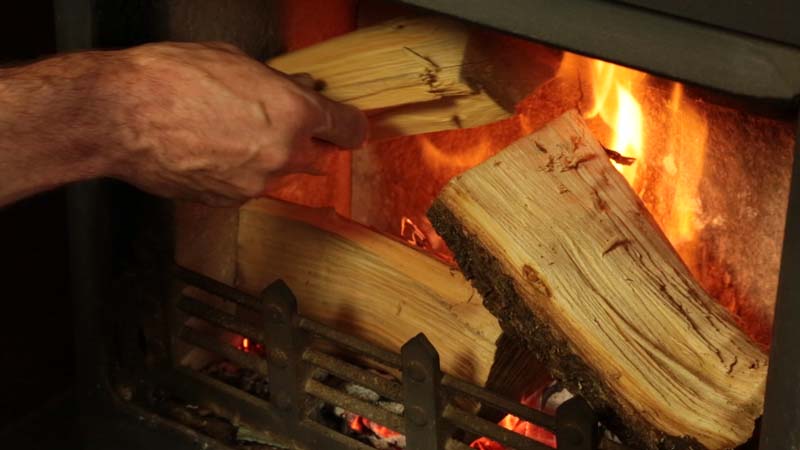
Getting it right is easy once you know how and it really is important. You can have a great fire and chimney with lovely dry fuel, but if it’s not burning hot enough, you will create unnecessary pollution with every burn! Bringing your fire up to correct operating temperature quickly and keeping it there will give the best result. Pollution will be minimised, you’ll save money and your chimney will be cleaner and safer.
LIGHTING AND OPERATING
You should check the manufacturer’s information for specific details on the operation of your stove. The majority of stoves in the UK are “multi fuel” although the most common fuel is wood logs. Most stoves are not suitable for burning normal “house coal”. Many manufacturers will specify “smokeless coals” only if using a coal based fuel so you should check the instructions.
BASIC GUIDE
- Use plenty of small kindling / sticks or suitable firelighter so that the fire is quickly established. Slightly larger logs should go on top. Use wood with a moisture content of 20% or less. Look for the Ready to Burn logo when purchasing bags of fuel.
- Set all air controls to fully open, light the fire and close the door.
- Allow a reasonable burn for 10 to 15 minutes (basically, flames should fill the box without being sucked up the chimney). It will take at least this long to bring the stove up to a good operating temperature.
- Re-fuel now with slightly larger logs and allow a few minutes to establish. It is only when these small logs are burning that full size logs should be added. Things will be getting quite hot now. If your stove has more than one air control then this is the time to close the one which allows air directly in from the room. This is often called the primary control. See the manufacturer’s instructions. Better still ask a professional chimney sweep to show you how it works and have them explain why it is so important.
- Once the “primary” air control has been closed the temperature will continue to rise. Using a “flue pipe thermometer” will help you know when you have reached the best temperature. If you are using a thermometer then aim for the middle of the “best operation” range. Again, ask your chimney sweep to show you and explain.
- Once you reach optimum temperature you may now be able to reduce the amount of air using a “secondary” control. Reducing this air will slow the rate of burn but it is vital not to close it off too much. There should always be a reasonable amount of flame in the box and glass should stay clear.
- Once the stove has been running at optimum temperature for 15 minutes or so, you can check to see if you have set the controls correctly by simply looking at the top of your chimney. If you see smoke, then there is not enough air getting in to the stove. Open the control up a bit, allow the fire to build for a few minutes and have another look. Once there is no smoke, you’ve got it right!
Every stove is different and you need to know what is best for you.
Ask your local sweep to take you through the process for your stove and have them explain everything. All professional sweeps are very interested in helping you get it right as it makes cleaning the chimney easier next time. Following their advice will save you fuel (money), it will mean your chimney is cleaner (safer) and you will have created less harmful pollution in your local area.
Please help us all by sharing this information with everyone who uses a fire or stove, after all, “We all breathe the same air.”
